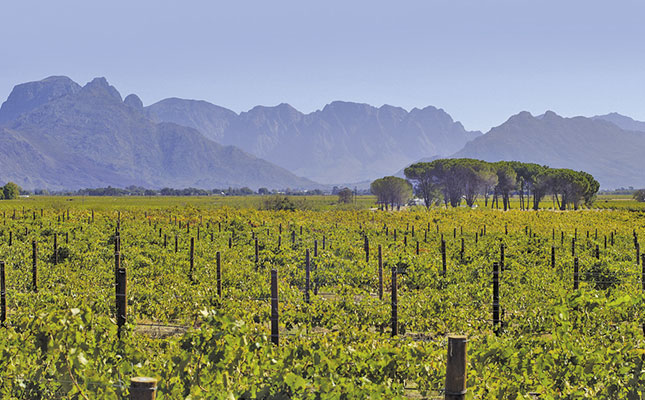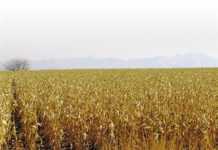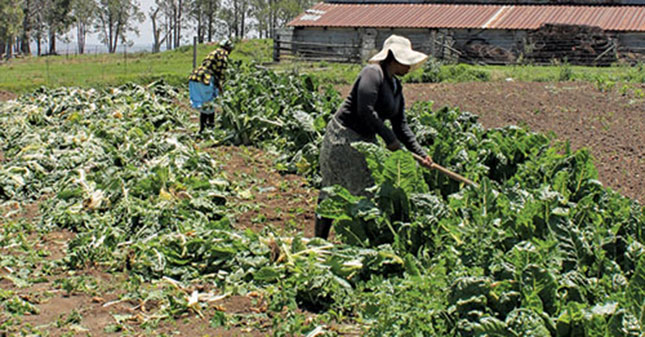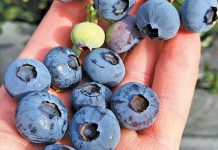
Photo: Melody Botha
To what extent has agritourism added value to your members’ businesses and the region as a whole?
Agritourism, specifically wine-tourism, is one of the fastest-growing sectors in the ecotourism industry. There is nothing new about this form of travel, which involves staying on a farm and sampling the day-to-day lifestyle. On some farms, the goal is less about focusing on a unique holiday and relaxing in a beautiful setting, than fostering an understanding of the farming process through education and hands-on experience.
READ:Ensuring the success of your agritourism business
In the Breedekloof Wine Valley, 95% of the area’s accommodation facilities are now situated on farms. Self-catering cottages and campsites can be found on the banks of rivers, nestled in vineyards or hidden in the mountains among the fynbos. Although we don’t yet offer hands-on activities, we do provide visitors with a ‘working farm experience’, as well as give them access to rivers and mountains, and hiking trails and mountain bike routes developed by the farmers.
Do you think the SA agriculture sector has grasped the opportunities presented by agritourism?
Agritourism, as it’s broadly defined, involves any agriculturally-based operation or activity that brings visitors to a farm. Although I believe the South African agricultural industry has been hesitant to embrace agritourism, the sector’s growth has skyrocketed during the past three years. Apart from on-farm accommodation, the region also has a number of festivals that are aimed at farming and harvesting activities, such as Hands on Harvest in Robertson.
What opportunities exist for agritourism in South Africa?
Agritourism could be a viable, alternative agricultural enterprise for farming communities. Producers in the Breedekloof Wine Valley have begun to embrace agri- and wine-tourism, and are offering hiking trails, mountain bike routes, horse riding, and a variety of accommodation options on their farms.
These activities could be developed still further to include involvement in daily farming activities as well as harvesting
and pruning. (Picking cherries in Ceres is a good example.) Farmers could also increase their exposure by distributing brochures, forming networks with existing tourism establishments, encouraging the use of local and fresh produce, and providing good roadside signage.
Agritourism can help to enhance the demand for local produce, boost regional marketing efforts, and create value-added and direct marketing opportunities to stimulate local economic activity. We have a wide variety of agricultural activities in South Africa – livestock, dairy, grain, wine production, fruit growing, and more. All these can be developed into tourism ventures so that visitors can feel they are really part of the experience. Incorporating wildlife and conservation aspects into farm tours will also help to create awareness of South Africa’s biodiversity and illustrate how farmers are looking after the land for the benefit of future generations.
What are the potential pitfalls that farmers have to look out for when embarking on an agritourism venture?
As with any tourism experience, it’s important not to try to present something you are not, but rather ensure that every aspect of what you present is 100% authentic. We need to be proudly South African and proud to be part of the farming community, allowing people to see and experience our way of life.
In the Breedekloof Wine Valley, we’ve realised that we need to focus on the stories we have to tell, as this is what makes us unique. We are proud of our heritage and our wines and this is the message we send out to visitors to our region.
Don’t try to be everything to everyone; rather focus on what you know. Quality and service are non-negotiable. Link up with your local tourism organisations and/or wine routes so that funds, knowledge and experience can be pooled to market the region and develop the local tourism products. Training all employees is of the utmost importance and should be ongoing.
Visitors want to experience the unique atmosphere of a destination. You therefore need to create fresh, innovative experiences. Picking a bunch of grapes can be just that, or it can be part of a story, a life-changing experience that visitors will take with
them and relate to their friends. Travellers no longer believe what tourism organisations and marketing bodies tell them – they prefer referrals and listen to friends’ experiences. The best form of marketing is having an ambassador, someone who believes in you and your product. This is one of the reasons that authenticity is so important.
Who are the typical clients that agritourism businesses should target?
Today’s travellers no longer want traditional one-dimensional holidays. Instead, they want meaningful experiences that enrich their lives and broaden their perspective on the world. More travellers are searching for value-for-money holidays, combined with memorable experiences and interacting with locals. A good example is eating local food in the company of locals, as this gives visitors the chance to really ‘experience’ a destination.
Is your marketing predominantly aimed at international tourists?
I really believe in trying to attract South African tourists. In the Breedekloof Wine Valley we focus on the domestic market, including the greater Cape Town area, Gauteng and KwaZulu-Natal. However, with the growing popularity of our region, we also have an international following. Our focus is on people, especially families, who want to get out of the city and focus on nature.
A destination such as South Africa has a wealth of outdoor locations as well as great weather. Combining these with growing tourism activities such as cycling (which has been called ‘the new golf’), health, lifestyle and wine-tourism, will ensure an enjoyable experience.
You mentioned marketing exposure earlier. Are there other ways in which agritourism operations can advertise their presence?
To begin with, agritourism should not be seen as separate from other tourism products. Limited resources and funding mean that farmers need to link up with regional and provincial marketing organisations when it comes to producing brochures, maps and other marketing material.
There is also the ever-growing importance of social media. According to eMarketer, social media users across the globe increased 18% in 2013 to more than 1,7 billion users. About 350 million photos were uploaded daily on Facebook in 2013, while Instagram had 58 million daily uploads, and WhatsApp 400 million images a day. The tourism sector has embraced social media, and those brands that actively engage their customers become increasingly popular.
Are there any other potential spin-offs for the South African economy from agritourism?
By combining tourism with the uniqueness and diversity of local agriculture, agritourism could create opportunities for local farmers to increase their revenue and enhance the viability of their operations. Importantly, this will benefit local communities by helping to increase employment opportunities.
Agritourism could also provide an excellent vehicle for educating the public about the importance of agriculture and its contribution to the country’s economy. It would therefore clearly be to the advantage of local municipalities and government agencies to devote more resources to developing and promoting agritourism.
Just one way in which they could encourage agritourism is to reduce the red tape around signage and rezoning. This in itself would help to encourage farmers to get involved.
Phone Melody Botha on 023 349 1791 or email [email protected]
This article was originally published in the 16 January 2015 issue of Farmer’s Weekly.












